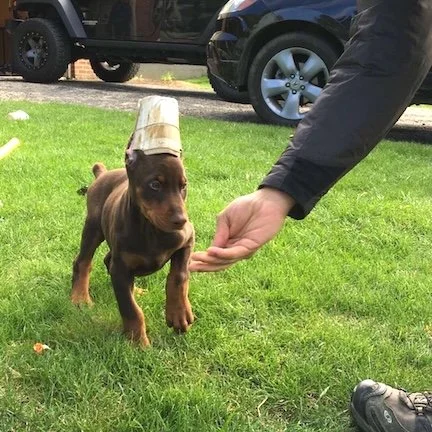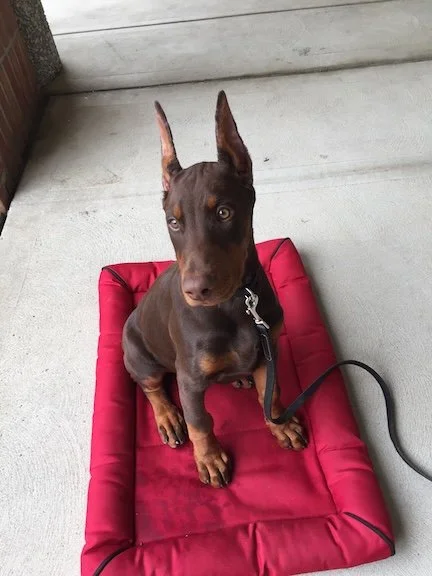I Put My Dog Down and LEARNED SOMETHING
A leadership lesson on how perspective drives reactions.
I signed the forms for death by injection and communal cremation. I handed the leash to the vet assistant and walked out the front door of the clinic—knowing I would never see Tuco again. No ashes. No collar. No box.
I picked him up at eight weeks old and had to put him down at nine and a half years old. And it did not bother me… at all. No flood of emotion. No sadness. Nothing.
Over the next week, as people learned I had put Tuco down, they started asking how I was doing.
“I’m great,” I’d say. “Why?”
“Because you had him so long, and I know how much you loved him.”
“Yeah,” I’d say. “I’m not sad about it.”
Many were slightly disturbed by my lack of emotion.
Behind the eyes of others, I could see them silently doing the math—dog lover minus emotion equals possible sociopath.
That’s when I decided to write what I learned from this experience.
Side Note: This article focuses solely on how people respond differently when putting down their dogs. Please do not conflate anything I say here with the passing of a human.
THOSE WHO DEEPLY FEEL THEIR DOG’S DEATH
According to one survey, 85 percent of pet owners experience grief symptoms after their dog dies, and a third still feel it six months later.
Many of you reading this would, or have, responded emotionally to the death of your dog.
You see years of companionship, loyalty, routine, and identity wrapped in fur. When your dog dies, you lose a portion of your shadow. Your emotions show up as tears, sadness, and sometimes even loneliness.
You miss the wagging tail as you move their direction, the nudges on your hand for a forced pet, and how they followed you from room to room.
For some of you, hearing that I felt nothing probably confirms your suspicions. You are thinking, yep, this guy might actually be a little off.
And I get it. I really do. I understand why you might think that about me, given the story I just told you about Tuco.
MY REVELATION
As my wife cried about Tuco the night before I had him put down, I realized something about most of you reading this. You experience the loss of your dog from your end of the leash. You see your dog’s passing through what it means for you, what you lost, what you will miss, and how different life will feel without them. There is nothing wrong with being wired to view your dog’s passing that way.
Follow me for a moment as I share with you what I told my wife that night. “I see putting Tuco down from his end of the leash.”
When I picked him up at eight weeks old, I already knew he would die in nine to twelve years. I also knew 68% of Dobermans die before their tenth birthday. I was aware that every one of his siblings would be gone within a year or so.
I gave him the house life, the go-everywhere-with-me life. He backpacked and camped with me all over the eastern United States.
Two weeks before having him put down, his kidneys had failed. He had not eaten a single calorie in five days and was about to die a slow death of starvation with toxins building in his blood.
From his end of the leash, he had the best life a dog could have. And now, since he was going to die anyway, he would simply get a shot (something he never minded), go to sleep, and never wake up.
From Tuco’s end of the leash, he lived his life and fulfilled his purpose.
There was never anything in my mind to be emotional about.
And there is nothing wrong with me and the other 15 percent of us who think through our dogs’ passings from the clasp end of the leash.
PERSPECTIVES OF THE DOG LEASH
Many of you primarily feel the loss from the handle of the leash. I viewed Tuco’s passing from his end of the leash.
When someone reacts to their dog’s death more emotionally than you expect, or not emotionally enough, it helps to pause and ask a few questions.
Which end of the leash are they viewing it from?
Am I silently judging them for not responding the way I would?
LESSON ON LEADING PEOPLE (Not about dogs)
Let’s learn to slow down before we judge someone’s reaction to a situation. Whether it is too much emotion or not enough, we do not want to jump to conclusions. Let's stay curious instead.
We ask what might be behind the reaction (or lack of it).
From which end of the leash is the person viewing the situation?
This helps us move from frustration to understanding that someone is not reacting the way we would. From assumption to seeing their perspective. Because once you understand the perspective that drives someone’s response, you can lead them better, serve them better, and connect with them without pulling on the leash trying to make them react the way we would.
SUPPORT GROUP
I considered starting a support group for dog owners like me. But let’s be honest, we’d cancel the first meeting because… we’re fine… and out picking up our next dog!







